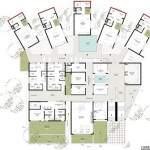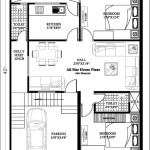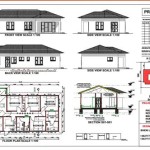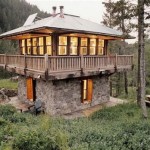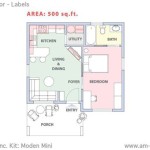Narrow House Plans With Elevators: Accessibility and Space Optimization
The increasing demand for urban housing solutions necessitates innovative architectural designs that maximize space utilization while ensuring accessibility for all residents. Narrow house plans, characterized by their limited width and extended length, present unique challenges and opportunities. Integrating elevators into these designs addresses accessibility concerns, particularly for aging individuals, those with mobility impairments, and families with young children. This article explores the considerations involved in designing narrow house plans with elevators, focusing on space optimization, elevator selection, regulatory compliance, and aesthetic integration.
Understanding the Constraints and Opportunities of Narrow House Design
Narrow lot development, often driven by land scarcity and affordability issues in densely populated urban areas, requires meticulous planning and creative design solutions. Common constraints include limited natural light penetration, restricted circulation space, and potential difficulties in accommodating standard-sized furniture and appliances. However, narrow spaces also offer opportunities for unique architectural expression and efficient use of vertical space. The strategic placement of windows, skylights, and light wells can compensate for limited horizontal light exposure. Open floor plans and strategically placed mirrors can create an illusion of spaciousness. Vertical strategies such as stacking living spaces and incorporating multi-functional furniture are also crucial for maximizing usability.
When considering elevator integration, the inherent vertical emphasis of a narrow house is amplified. The elevator shaft becomes a central element, influencing the layout of each floor and the overall structural design. Its location impacts circulation patterns, visual flow, and the distribution of natural light. Therefore, careful consideration must be given to the position of the elevator within the floor plan, ensuring that it enhances rather than hinders the functionality and aesthetics of the home.
Planning a narrow house requires a shift in design thinking. It moves away from conventional, sprawling layouts towards a more deliberate, vertically-oriented approach that prioritizes efficiency and accessibility. The addition of an elevator is a key element of this approach, allowing for flexible space allocation and independent living on all levels.
Elevator Selection and Space Requirements
Choosing the appropriate elevator for a narrow house requires careful assessment of several factors, including space availability, budget constraints, desired capacity, and aesthetic preferences. Several elevator types are suitable for residential applications, each with its own advantages and disadvantages.
Hydraulic elevators are a common option, known for their reliability and relatively low initial cost. However, they require a machine room to house the hydraulic pump and control equipment, which can consume valuable space. Traction elevators, which use cables and counterweights, are generally more energy-efficient than hydraulic elevators and do not require a machine room. However, they may require more overhead clearance and a deeper pit, which can be challenging to accommodate in a narrow house. Machine Room-Less (MRL) elevators are becoming increasingly popular, as they eliminate the need for a separate machine room, making them ideal for space-constrained environments.
In addition to the elevator type, the size and configuration of the elevator cab must be carefully considered. The interior dimensions must comply with accessibility standards, ensuring that it can comfortably accommodate wheelchair users and individuals with mobility aids. The elevator entrance width is also critical, as it must allow for easy maneuvering of wheelchairs and other equipment. The overall footprint of the elevator shaft, including the cab, rails, and associated equipment, must be precisely calculated to minimize its impact on the usable floor area. The design of the elevator doors, whether sliding or hinged, can also significantly affect the space requirements and the overall aesthetics of the interior.
When integrating an elevator into a narrow house plan, precise measurements and detailed drawings are essential. Collaboration between the architect, structural engineer, and elevator supplier is crucial to ensure that the elevator system is seamlessly integrated into the building design without compromising the structural integrity or functionality of the home.
Compliance, Cost, and Aesthetic Considerations
The integration of elevators into residential buildings is subject to various building codes and accessibility standards, which vary depending on the local jurisdiction. Compliance with these regulations is essential to ensure the safety and usability of the elevator system. These codes often specify minimum cab dimensions, door widths, safety features, and emergency communication systems. In many jurisdictions, compliance with the Americans with Disabilities Act (ADA) guidelines is required, even in private residences, particularly if the home is intended for resale or rental.
The cost of installing an elevator in a narrow house can vary significantly depending on the elevator type, size, features, and installation complexity. Initial costs include the elevator unit, shaft construction, and installation labor. Ongoing costs include electricity consumption, maintenance, and periodic inspections. Selecting energy-efficient elevator systems and implementing regular maintenance programs can help minimize long-term operating costs. Obtaining multiple quotes from reputable elevator suppliers and considering different financing options can help manage the initial investment.
Beyond functionality, the aesthetic integration of the elevator into the overall design of the house is a key consideration. The elevator can become a focal point, seamlessly blending with the architectural style of the home. The elevator cab can be customized with various finishes, materials, and lighting options to complement the interior décor. The elevator doors can be designed to mimic the surrounding walls, creating a hidden or integrated appearance. The elevator shaft can be enclosed in glass, providing panoramic views and maximizing natural light. Working closely with an interior designer can enhance the elevator's aesthetic appeal and ensure that it contributes positively to the overall ambiance of the home.
Optimizing Space and Functionality Around the Elevator Shaft
The design around the elevator shaft is critically important for maximizing functionality in a narrow house. The space directly adjacent to the elevator entrance on each floor should be carefully considered to facilitate smooth transitions for users. Hallways should be wide enough for easy maneuverability, especially for wheelchair users. Clever storage solutions, such as built-in shelving or recessed cabinets, can be integrated around the elevator shaft to maximize space utilization. The elevator itself can be used as a dividing element, separating different zones within the house. For example, on one floor, it might separate the living room from the dining area, while on another floor, it could separate the bedrooms from the bathrooms.
Strategic placement of the elevator can also improve natural light distribution. A glass-enclosed elevator shaft can act as a light well, bringing sunlight into the interior of the house. The location of the elevator should also consider the flow of foot traffic. It should be positioned in a central location that is easily accessible from all areas of the house. Consider the views from the elevator at each level. Strategic placement of windows or artwork can enhance the user experience and create a more visually appealing ride.
The area surrounding the elevator shaft can also be used for practical amenities. A small seating area can be placed near the elevator entrance on the ground floor, providing a comfortable waiting space. A small storage closet for cleaning supplies or household items can be incorporated near the elevator, maximizing the utility of the space. Consider the placement of electrical outlets near the elevator, providing convenient access for charging mobile devices or operating small appliances.

Contemporary House Plan With Elevator For The Narrow Lot 36546tx Architectural Designs Plans

Contemporary House Plan With Elevator For The Narrow Lot 36546tx Architectural Designs Plans

2 Story 3 Bedroom Country Home With Elevator And Loft House Plan

Coastal Stilt House Plan With Elevator And Second Level Living Space 765044twn Architectural Designs Plans

Elevator Equipped House Plans Sater Design Collection

House Plans Floor With Elevator For Builders

Home Plans With Elevator

Craftsman Style House Plan 4 Beds 3 Baths 2793 Sq Ft 929 986 Plans Narrow Stone

House Plan 46390 Traditional Style With 1200 Sq Ft 2 Bed Ba

House Plan 82250 Narrow Lot Style With 1588 Sq Ft 3 Bed Bat


